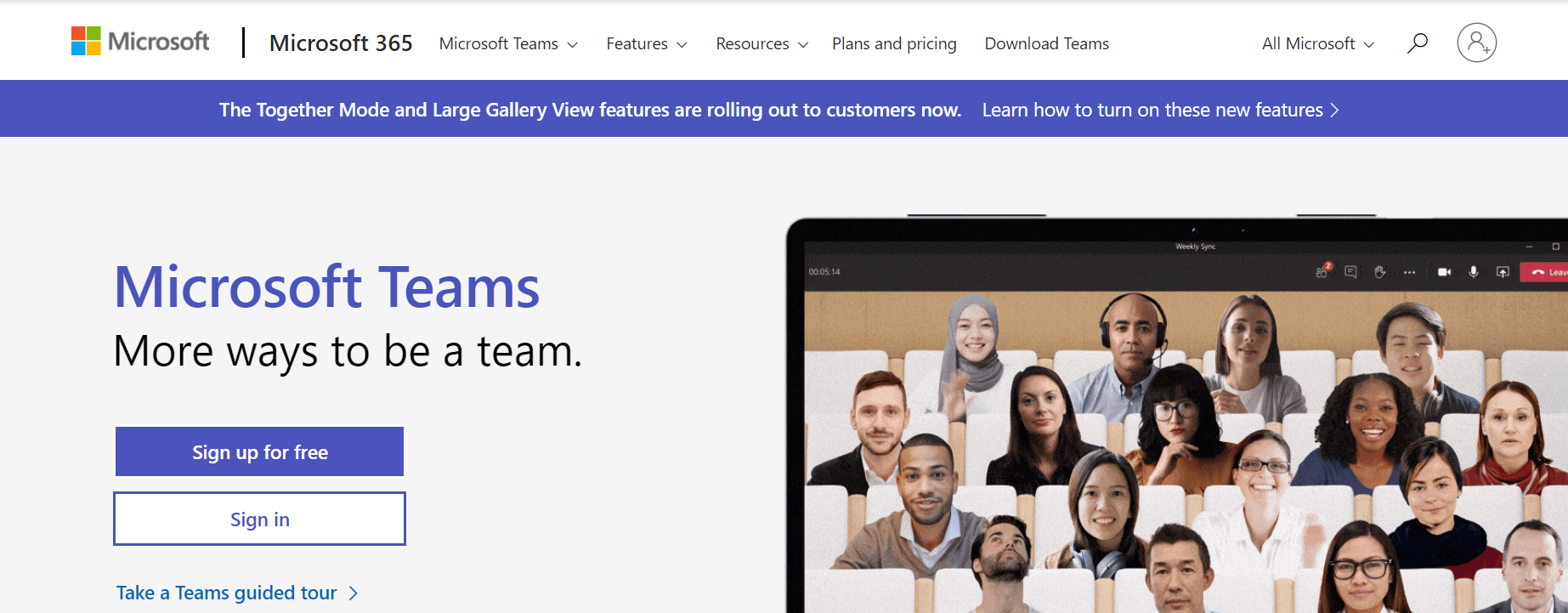Microsoft Teams vs. Zoom: Which Provides Better Remote Meetings

Microsoft Teams vs. Zoom: What will you choose?
Are your online team meetings productive? 2020 was the year of the online work meeting — resulting in large-scale adoption of video conferencing software and tools, with 45% of teams using video calling tools daily or weekly.
With remote meetings being the norm, businesses need to ensure they get the most out of their online meetings. The best way to do this is to use the right remote meeting software to run your meetings. There are many platforms to choose from, but Microsoft Teams and Zoom are currently the two heavyweights in this arena.
So, when it comes to Microsoft Teams vs. Zoom, which is better for remote meetings? We’re here to help you evaluate each tool based on platform-specific criteria. Our goal isn’t to crown a winner. Your business is unique, and only you know exactly what you need to boost your remote meetings’ effectiveness. We simply want to provide the information for you to make the right choice for your business in the Microsoft Teams vs. Zoom debate.
6 Criteria for Evaluating Microsoft Teams vs. Zoom for Remote Meetings
At the most basic levels, Zoom and Microsoft Teams offer fantastic ways for you as a supervisor to connect with your employees and replicate face-to-face meetings as best as possible. Between the two, Zoom is the veteran service, launching in 2012. Microsoft Teams wouldn’t be released for 5 more years in 2017. However, Microsoft as a brand is significantly older than Zoom.
Despite their age difference and names, though, they seem to do the same thing to a newcomer. Both offer basic chat functions and video calls, so it appears that either can get the job done, right?
Well, it ultimately depends on your business. Some businesses may favor call quality, and some may prefer ease of use. For this article, we have used 6 basic criteria for evaluating these two services:
- Remote meeting essentials
- File sharing and collaboration during a meeting
- Integrations
- Ease of use
- Call quality
- Mobile app experience
With Microsoft Teams having over 9,000 reviews on G2 and Zoom having over 33,000, it may seem difficult for us to compare these two services together truly. However, we have chosen these 6 specific criteria to look at to ensure you’re picking the right service for your business’s unique needs.
If you’re thinking about adopting Microsoft Teams, we at Atlantech offer Microsoft Teams Calling, a feature that integrates your company phones into one system for ease of use.
1. Remote Meeting Essentials

There are a few things that could be considered essentials when you’re operating in an online environment.
- You may need to record calls for your employees who cannot make a meeting.
- You may need to share your screen just as you would share a PowerPoint in an in-person setting.
- You may even need transcription for your meetings for your employees.
Both Microsoft Teams and Zoom offer the ability to annotate while screen sharing and provide an ability to record audio and visuals from the meetings.
However, Microsoft Teams has significantly more detail in its channel features, accessibility with Microsoft Office programs, and how chats are organized beyond the meeting’s length.
2. File Sharing and Collaboration During a Meeting
Both Zoom and Microsoft Office allow users to share files during a meeting and collaborate via annotation on shared screens. However, with Zoom, these features are limited to the duration of the meeting.
Microsoft Office allows these shared documents to be stored within channels and inside the program itself so you can reference these documents at a later date.
3. Integrations
Microsoft Teams is leaps and bounds ahead of Zoom when it comes to being integration-friendly. Microsoft built Microsoft Teams. It was designed to be completely integrated within the Microsoft Office family of applications.
Microsoft Teams can also be integrated with our Microsoft Teams Calling feature, allowing you to incorporate your telephone service into Microsoft Teams, letting your existing extensions work within Microsoft Teams.
As such, if your company uses Microsoft 365, Teams seems to be the perfect option for you due to how seamlessly it operates with Office applications.
4. Ease of Use
Zoom doesn’t require users to have an account to join in a call, which makes it easy to simply send a link to your employees and get a meeting going. For impromptu meetings with people outside your regular company, this might be a great option.
While there is significantly more to do when setting up a Microsoft Teams meeting, the ability to access all documents needed in a meeting directly through Teams makes it come ahead in how easy the program is to use.
5. Call quality
Although Microsoft Teams does offer HD calling, many report that call quality can be a bit lower than Zoom. Since Zoom is primarily used for video meetings, and Microsoft Teams is used to do far more than simple video calling, it makes sense that Zoom may have higher call quality than Microsoft Teams.
However, this doesn’t mean call quality with Microsoft Teams is poor. The standard and HD audio provides crisp and clear call quality that is in no way poor. Your call quality can also be improved even more by using our Microsoft Teams Calling integration.
6. Mobile App Experience
Zoom, again, allows users to join in on meetings without having an account by merely downloading the app. While the app is simple and easy to use, it lacks many features that Microsoft Teams offers.
Microsoft Teams is compartmentalized, organized, and if your team is consistently using Microsoft 365, you’re going to get a lot of use out of the mobile app. Your employees can access documents on the go, linking to other Microsoft apps. While a bit more involved than the Zoom app, it offers your employees more resources and tools than Zoom.
Microsoft Teams vs. Zoom: Which is Best for You?
Zoom is fantastic if you’re looking for a simple way to host video meetings with some useful add-ons. You can host a perfectly effective remote meeting through Zoom. If it’s something you don’t do very often or require attendees to reference material frequently, then this program is perfect for you.
However, if your team uses Microsoft documents often and needs to refer to those documents consistently during meetings, Microsoft Teams might be the best for you, thanks to the ease of Microsoft Office integrations.
Both are great and well-reviewed services, but if you decide on Microsoft Teams, let us make the experience even better through our Microsoft Teams Calling integration. We can help natively integrate your phone systems into Microsoft Teams, giving your team every tool they need to succeed.


